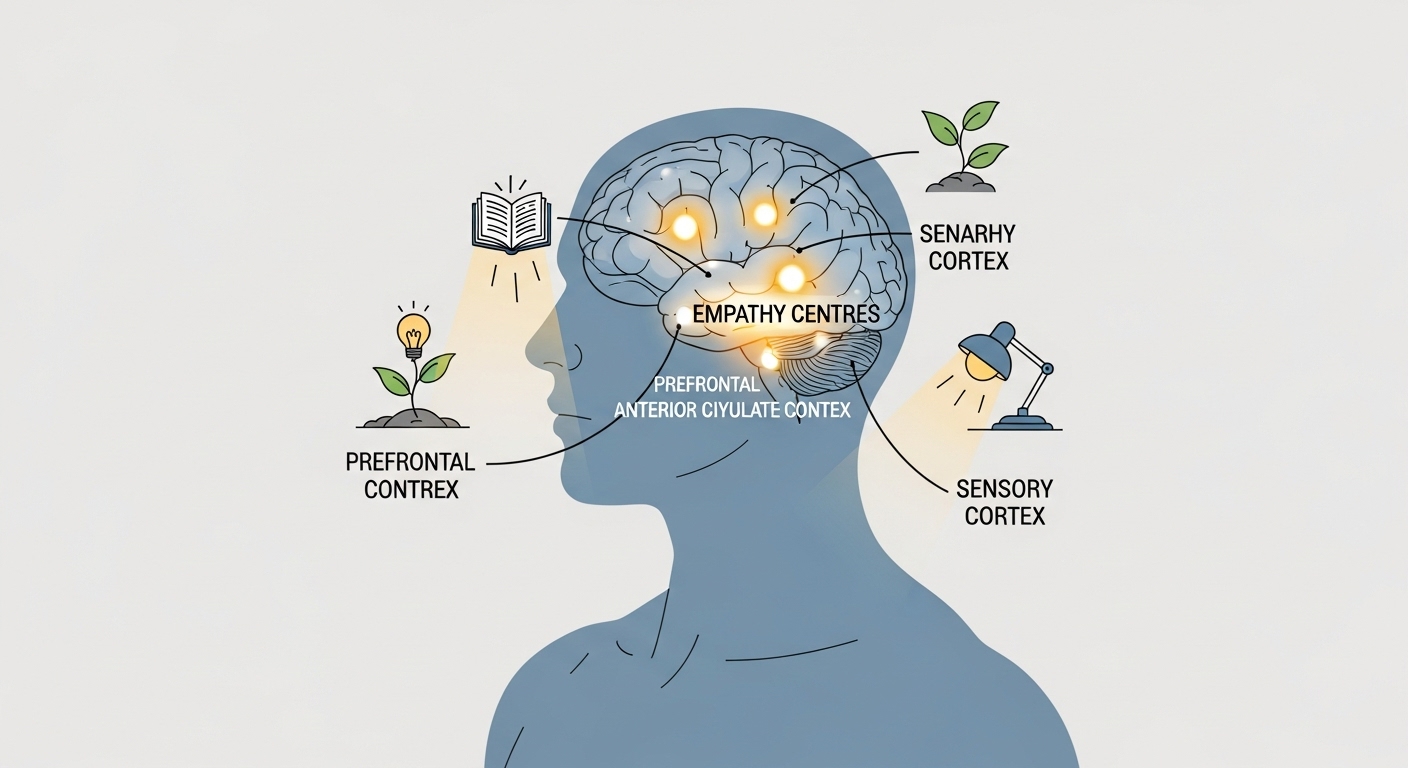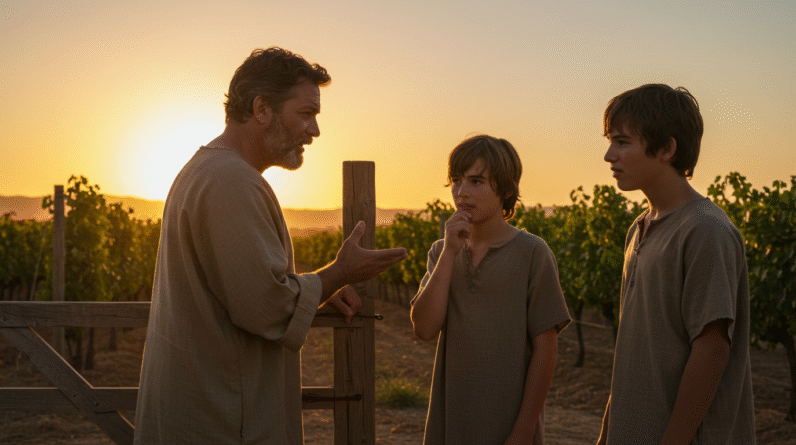Hidden Frequencies In The Parables: How Jesus Used Storytelling Psychology Before Modern Neuroscience (Mark 4:33–34)

Introduction
Have you ever listened to a story and felt it land in your chest before your brain could even explain why? Maybe a simple parable or anecdote shifted your thinking, softened your heart, or nudged you to act. You’re not alone. Storytelling hits hidden frequencies inside you—patterns of attention, memory, and emotion—that science is only now starting to name. But long before modern neuroscience, Jesus was tuning into those frequencies in ways that are at once simple and profound.
In Mark 4:33-34, you see Jesus intentionally using stories. He didn’t just lecture; he set scenes, used characters, and let imagination do the rest. That method did more than teach facts. It moved people. It stayed with them. In this article, you’ll explore how Jesus used the psychology of storytelling—what I’m calling “hidden frequencies in the parables”—and how you can apply those same techniques in your life today: in teaching, parenting, pastoral care, and everyday conversations.
The Bible Foundation (Mark 4:33–34)
Read the verses here: Mark 4:33–34 (NIV).
“With many similar parables, Jesus spoke the word to them, as much as they could understand. He did not say anything to them without using a parable. But when he was alone with his own disciples, he explained everything.”
What’s happening here is plain and powerful. Jesus deliberately chooses parables as his primary way of speaking to the crowds. He layers teaching in story form for broad ears and reserves explanation for private moments with his disciples. That dual approach reveals a rhythm: public imagination opens hearts; private instruction deepens understanding. It’s a teaching strategy that respects both the limits and the possibilities of human attention and receptivity.
Understanding the Core Truth
At the heart of this passage is a simple truth: stories form people. When Jesus used parables, he wasn’t being evasive—he was wise. You absorb stories differently from how you absorb abstract claims. Stories bypass defensive arguments, anchor concepts in memory, and invite you to see yourself within a scene. That’s the core truth you’ll want to carry: parables are relational technologies—tools that shape thinking and feeling before they shape doctrine.
Think of the parables as tuning forks. They vibrate at emotional and cognitive frequencies that align people’s imagination with the truth Jesus wants to seed. That alignment creates fertile ground for transformation. You don’t just learn a point; you enter a story where the point becomes a lived-out possibility.
Going Deeper — The Hidden Meaning

The “hidden frequencies” inside parables are several-layered mechanisms working at once. When you look closer, you’ll notice how Jesus uses imagery, surprise, empathy, repetition, and suspense to engage both heart and mind.
- Imagery: Concrete images—seed, soil, lamp, mustard seed—anchor abstract spiritual realities in sensory terms. You can picture them, and pictures stick.
- Surprise: Parables often subvert expectations. The kingdom of God is small and a treasure, foolish and wise. That twist wakes your mind and keeps it awake.
- Empathy and identification: Parables let you step into another person’s shoes. You can be the farmer, the prodigal, the neighbor—suddenly doctrine becomes a lived predicament.
- Suspense and narrative arc: Stories move you through tension to resolution (or to a pause that demands your reflection). Your brain wants to resolve the tension, which makes you engage more deeply.
- Layered meaning: A parable can be understood at different levels depending on your spiritual maturity—hence Jesus explains privately to the disciples.
Take the parable of the sower (Mark 4:1–9, 13–20) as a worked example. To a casual listener, it’s about seed and soil. To someone wrestling with faith in hardship, it’s a mirror that reflects where your heart tends to shut down. To a follower receiving private teaching, it becomes diagnostic: where is your root system shallow? Each layer triggers a different response—memory, repentance, discernment, and commitment.
Modern Connection — Relevance Today
You live in a world saturated with facts, data, and competing arguments. Yet you still find yourself moved by stories: a friend’s testimony, a well-told sermon, a parable on social media that won’t leave you. That’s no accident. Neuroscience now shows that stories stimulate multiple brain regions: the sensory cortex, the emotion centers, and the social brain. They foster empathy through mirror neurons and help memory through narrative structure. Jesus was doing all this before these terms existed.
In practical life, you can use this truth in many ways. When you teach children, stories will outlast rules in their memories. When you lead a small group, parables or real-life stories will create space for vulnerability and transformation more effectively than doctrinal lectures. In counseling, telling or inviting someone to share a story can bypass resistance and open the way for confession and healing. Even in conversations at work, a short, well-chosen story will make your point stick more than a cascade of data.
Importantly, Jesus also modeled restraint: he used parables publicly, then explained privately. That balance matters today. If you always explain every nuance immediately, you can kill imagination. If you never explain, people may misunderstand the essential truth. You’ll want to cultivate both clarity and mystery.
Practical Application — Living the Message

How do you apply the hidden frequencies of parables in your daily life? Here are steps you can try, in ways that respect both the form and the intention of Jesus’ method.
- Tell less, show more. Swap abstract moralizing for short, concrete stories. If you want to teach generosity, tell a story of someone who gave sacrificially and what it cost and yielded.
- Use sensory detail. When you describe a scene, include smells, sounds, and textures. Your listeners’ brains will simulate the scene, increasing cognitive and emotional engagement.
- Leave space for reflection. After a story, ask an open question: “Which character did you resonate with?” or “Where do you see yourself in this scene?” Silence helps the story do its work.
- Hold back explanations sometimes. Let the parable unsettle in public; provide clarifying guidance in smaller settings or follow-up conversations.
- Practice layered meaning. Tell stories that work on different levels so people at different stages can take away different truths.
- Pray and invite the Spirit. Jesus’ stories were not manipulative—they were prayerful. Ask God to use your words to open hearts, not to produce a performance.
Try these in small ways this week. Tell a story instead of preaching a point. Ask someone which part of a story they felt. Notice how people respond differently when you resist the urge to immediately explain everything.
How Storytelling Moves the Brain (A Brief Science Note)

When you listen to a story, your brain does more than receive information—it simulates the experience. Researchers have found that vivid language activates sensory and motor areas of the brain. Stories can trigger oxytocin, a hormone linked to empathy and trust, which makes listeners more open to connection and influence. Narrative frameworks also help memory because your brain stores events in sequences; a story’s arc gives facts a scaffold.
Jesus’ parables exploit these same effects. He used simple, vivid images to engage your senses and emotions, then left space for internal processing so the truth could align with your will. The science confirms what the text models: stories are not fluff—they’re a deeply wired channel for transformation.
Reflection and Questions for Personal Growth
You can deepen your responsiveness to the parables by asking a few basic questions after you read or hear one:
- Which character do I most identify with?
- Where does this story make me uncomfortable?
- What single action does this parable call me to take?
- How might this story shape how I treat others this week?
These questions aren’t tests; they’re invitations. They move you from passive listener to active participant in the story’s meaning.
Fun Fact & Short Takeaway
Fun Fact: Scientists have discovered that when people listen to compelling stories, their brains release oxytocin, a chemical that builds trust and empathy. Jesus was using this biological reality centuries before science could name it. You might call that divine timing.
Short Takeaway: Stories touch the heart faster than facts. Jesus tuned into those hidden frequencies with his parables, and you can too.
Conclusion & Reflection — A Short Prayer
Jesus used parables to meet people where they were—inviting, unsettling, revealing—so their hearts could be changed. Today you can lean into that same rhythm: tell stories that are honest and vivid, listen for what the Spirit is saying, and hold room for both imagination and explanation.

A short prayer you can use now: Lord, open my heart to hear as you intend. Help me to tell and listen to stories that reflect your truth. Teach me the balance of mystery and clarity, and use my words to draw others closer to you. Amen.
Explore More
For further reading and encouragement, check out these posts:
👉 7 Bible Verses About Faith in Hard Times
👉 Job’s Faith: What We Can Learn From His Trials
👉 How To Trust God When Everything Falls Apart
👉 Why God Allows Suffering – A Biblical Perspective
👉 Faith Over Fear: How To Stand Strong In Uncertain Seasons
👉 How To Encourage Someone Struggling With Their Faith
👉 5 Prayers for Strength When You’re Feeling Weak

📘 Jesus and the Woman Caught in Adultery – Grace and Mercy Over Judgement
A powerful retelling of John 8:1-11. This book brings to life the depth of forgiveness, mercy, and God’s unwavering love.
👉 Check it now on Amazon 🛒💥
🔥 “Every great message deserves a home online.” 🌍💬🏡
Don’t let your calling stay hidden. Start a Christian blog or website using Hostinger — with 99.9% uptime, a free domain, and SSL, your voice can shine for God’s glory anytime, anywhere.
💥 Begin today. 🛒 Try it RISK-FREE! ✅
✝️ “Your body is God’s temple — care for it with purpose.” 💪💖🏛️
Renew your energy and restore balance naturally. Mitolyn helps support a healthy metabolism, giving you the vitality to live out God’s calling with strength and confidence.
🔥 Unlock Your Metabolic Power! ⚡Burn More Calories & Feel Great With Mitolyn. 💪
👉 Start Today. 🚀 Check Price Now. 🛒💰
💰 As a ClickBank & Amazon Affiliate, I earn from qualifying purchases.
📖 Acknowledgment: All Bible verses referenced in this article were accessed via Bible Gateway (or Bible Hub).
🚀 Want to explore more? 👉 Dive into our new post on Why Jesus? and experience the 🔥 life-changing truth of the Gospel!








